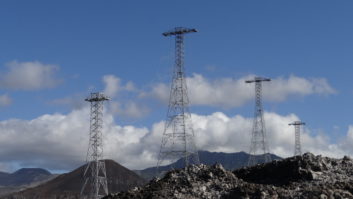Green Transmissions
Feb 3, 2011 10:27 AM, By Chriss Scherer, editor

In January, the NAB Fastroad project released a report that investigates the improvements in broadcast transmitter efficiency over the past 30 years. The report was prepared by Cavell, Mertz & Associates (CMA). It’s really no surprise that analog transmitters have improved their performance over the years, but until I read the statistics, I hadn’t really thought about solid-state and tube designs being 30 percentage points more efficient today than the devices built in the 1970s. That’s impressive.
Beyond that initial factoid, a good portion of the report discusses general transmitter efficiency for solid-state and tube designs, and analog and hybrid IBOC designs. The report has an added benefit of providing a review of the various IBOC generating schemes as well as some of the benefits of each method. The report even touches on alternative power options such as solar and wind.
The report reminded me that discussions about transmitter ac-to-RF efficiency have not been very common over the past few years. I have occasionally seen a statistic (especially if that transmitter manufacturer’s value exceeds the competitors’), but in many cases the differences in efficiency between two current models is often close enough. A more dramatic comparison can be made between a current and a vintage model, and that data is useful in weighing ongoing maintenance and repair costs vs. operating costs vs. a new capital expenditure.
What interests me more is the proposal of the Transmitter Energy Efficiency Award (TEEA) rating. This rating is to assist broadcasters in deciding which transmitter to choose by including long-term energy costs. According to the report, the gold award would be available for the top 25 percent most efficient transmitters in each class, and the silver award would rank the top 40 percent most efficient in each class. Think Energy Star rating for a transmitter.
And from the “but wait, there’s more” side of this story, CMA is developing a Web-based tool designed that will assist engineers and managers in the planning process to develop a several what-if scenarios to see the variation in long-term operational costs vs. one-time capital costs. Users will be able to evaluate the measured efficiency of their current transmitters as well.
I like the transmitter rating idea from the standpoint of being responsible stewards of our energy resources and our planet, and the report outlines the methods that would be used to create the ratings. But I don’t see ideas on who would actually prepare the ratings. Ideally, a credible third party would evaluate the various models to avoid any bias, but such a party would incur costs in its research. Who will pay for the evaluation? In the end, it will be the broadcaster purchasing the transmitter. There are also question about certifying the company making the evaluations.
And if the entire process is optional, I see only a limited use of the program. Maybe broadcasters are offered an incentive to purchase Gold TEEA transmitters. If they do, the FCC could offer a discount on regulatory or licensing fees.
Even without the efficiency seal, the online tool should be a useful resource for broadcasters.
Changes
By now you have heard that news that Radio magazine is now part of the NewBay Media group of publications. Many have asked what that means for Radio magazine going forward. Most importantly, we’ll continue as we already are, just with a different owner. Radio magazine and Radio World are established, unique brands, and we will continue that way, although now the two publications have the opportunity to work together in new ways rather than constantly competing. Radio magazine will still provide the must-have radio technology information you seek.
NAB Fastroad Investigates Transmitter Efficiency Ratings
The NAB Fastroad project funded the report, which includes a proposal for industry-standard energy efficiency rating for transmitters….
Build the Community
Radio magazine helps you do your job better. Help us build the engineering community….
February 2011
A deeper look at higher-power HD Radio, recording the Colorado Symphony in 5.1, and Field Reports on the iZotope ANR-B and Sanyo Xacti….












